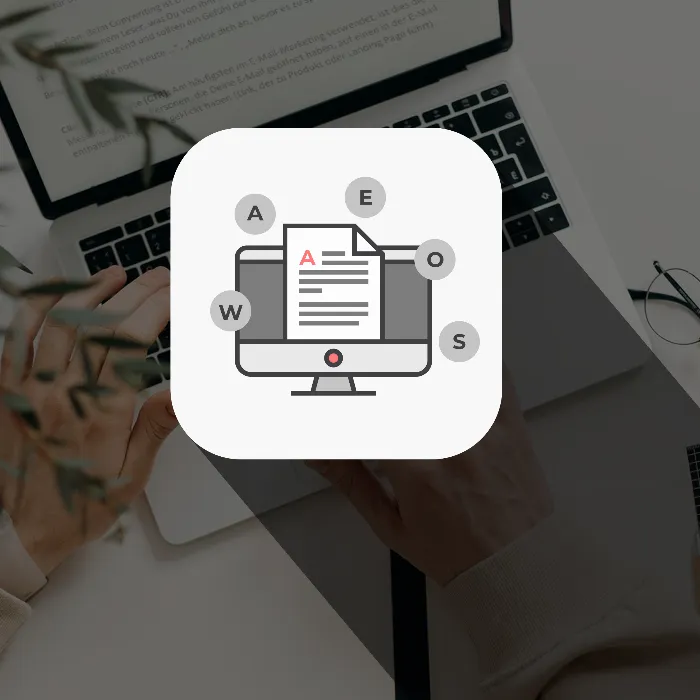Every successful product starts with a deep understanding of the target audience. An important step in this process is the application of W-questions for customer analysis. This guide will help you better understand the needs of your customers and develop more effective marketing strategies.
Main Insights By answering the W-questions, you can exactly understand who your customers are, what they buy, why they have certain preferences, and how to best address them to increase your conversion rate.
Step-by-Step Guide
1. Who is the buyer and user of the product?
The first step in customer analysis involves identifying the buyers and users of your product. Ask yourself: Who is capable of buying my product? Are they individuals, groups, or companies?
For example, if an iPhone is being sold, the buyer could be an individual making the purchase for themselves, or it could be a group decision, such as a family discussing the purchase of a television together. Also, consider that in the business sector, there are often multiple decision-makers involved.
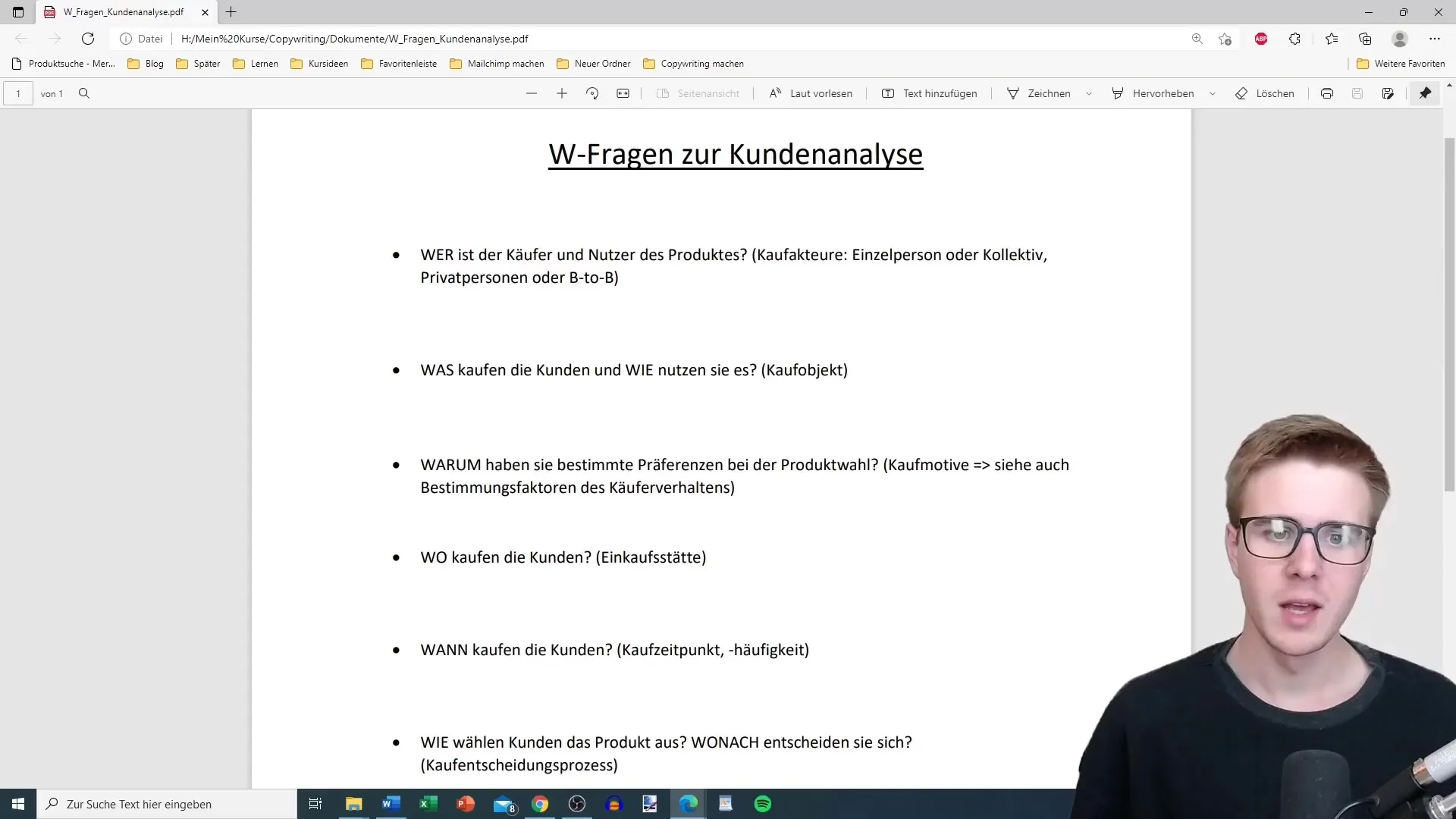
2. What do customers buy and how do they use it?
It is essential to understand exactly what customers are buying and for what purpose. Describe the purchased item and delve into how it is used. For example:
With the iPhone, usage could include taking photos on vacations or making calls with friends. These insights help you highlight the benefits of your product.
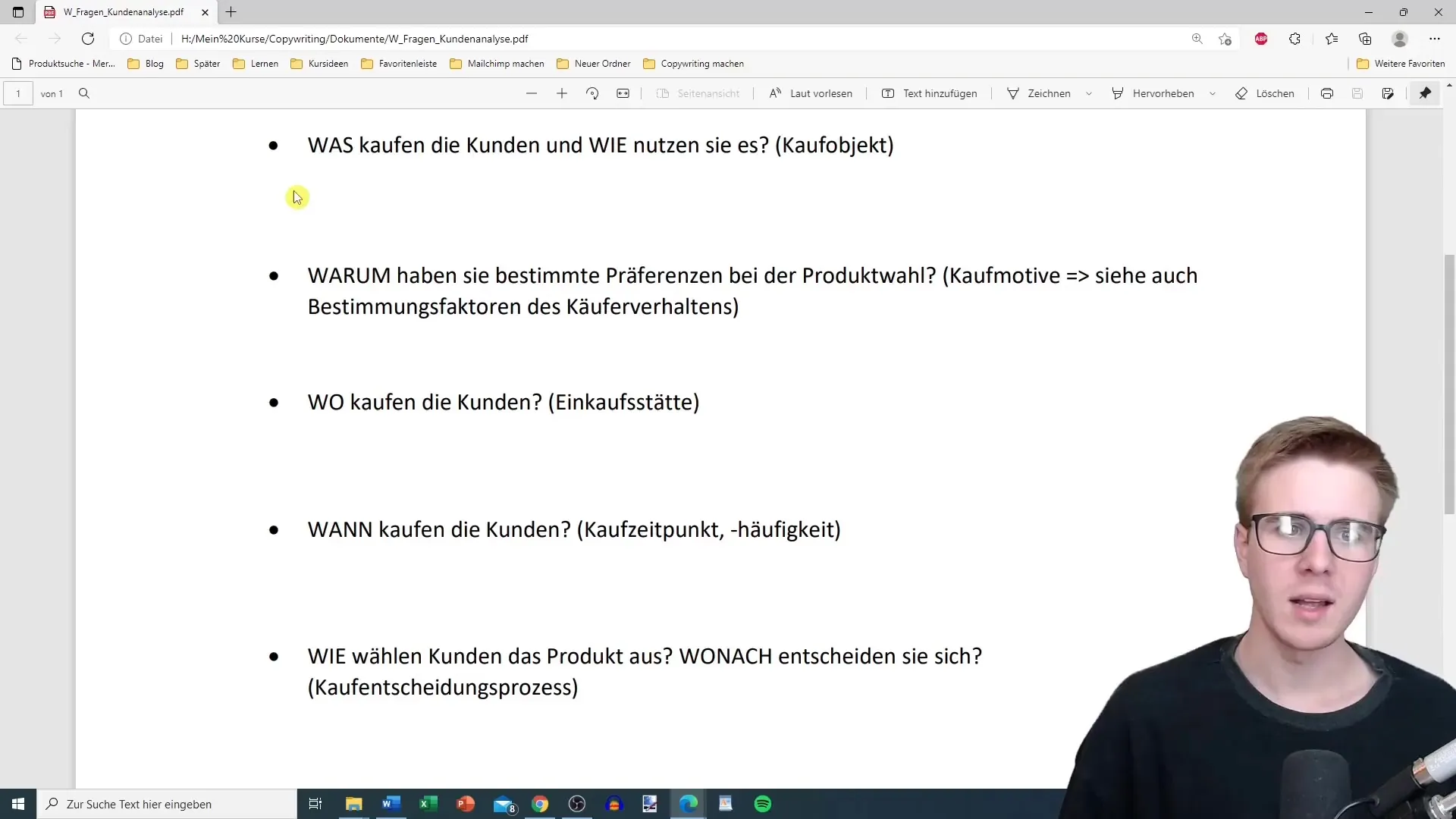
3. Why do they have certain preferences in product choice?
Here you analyze the purchasing motives of your customers. Why did they choose a specific product?
The purchasing motives can vary, from personal preferences such as brand loyalty to technical aspects like waterproofing or camera quality. These insights enable you to formulate more relevant and targeted messages.
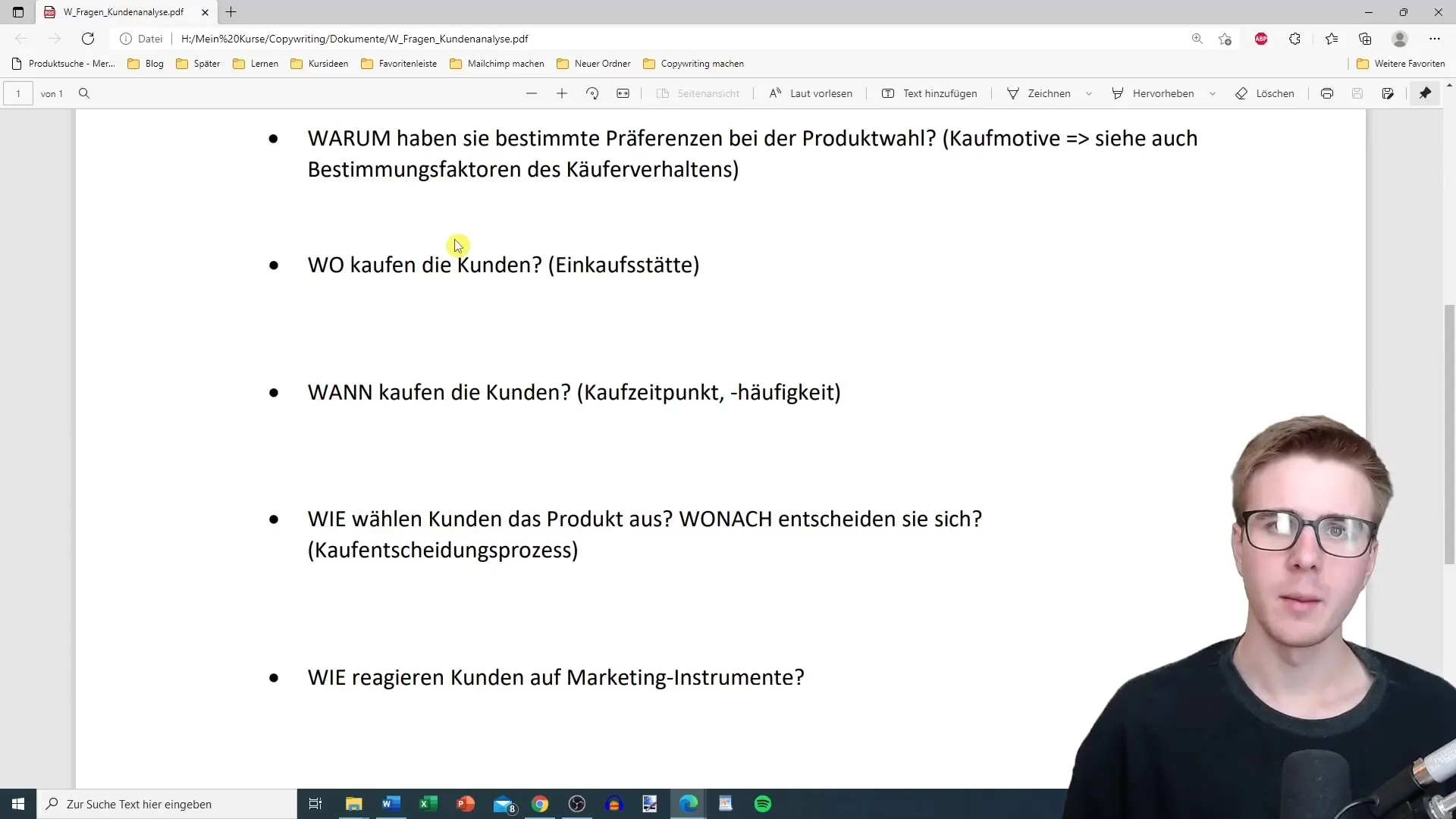
4. Where do customers buy?
The point of sale is a crucial factor. Determine whether your customers prefer to buy online or offline. Where are they most active?
For example, if the target audience prefers to buy from major retailers like Apple or Amazon, it can greatly influence your marketing strategies. It is important to know where your customers make their decisions.
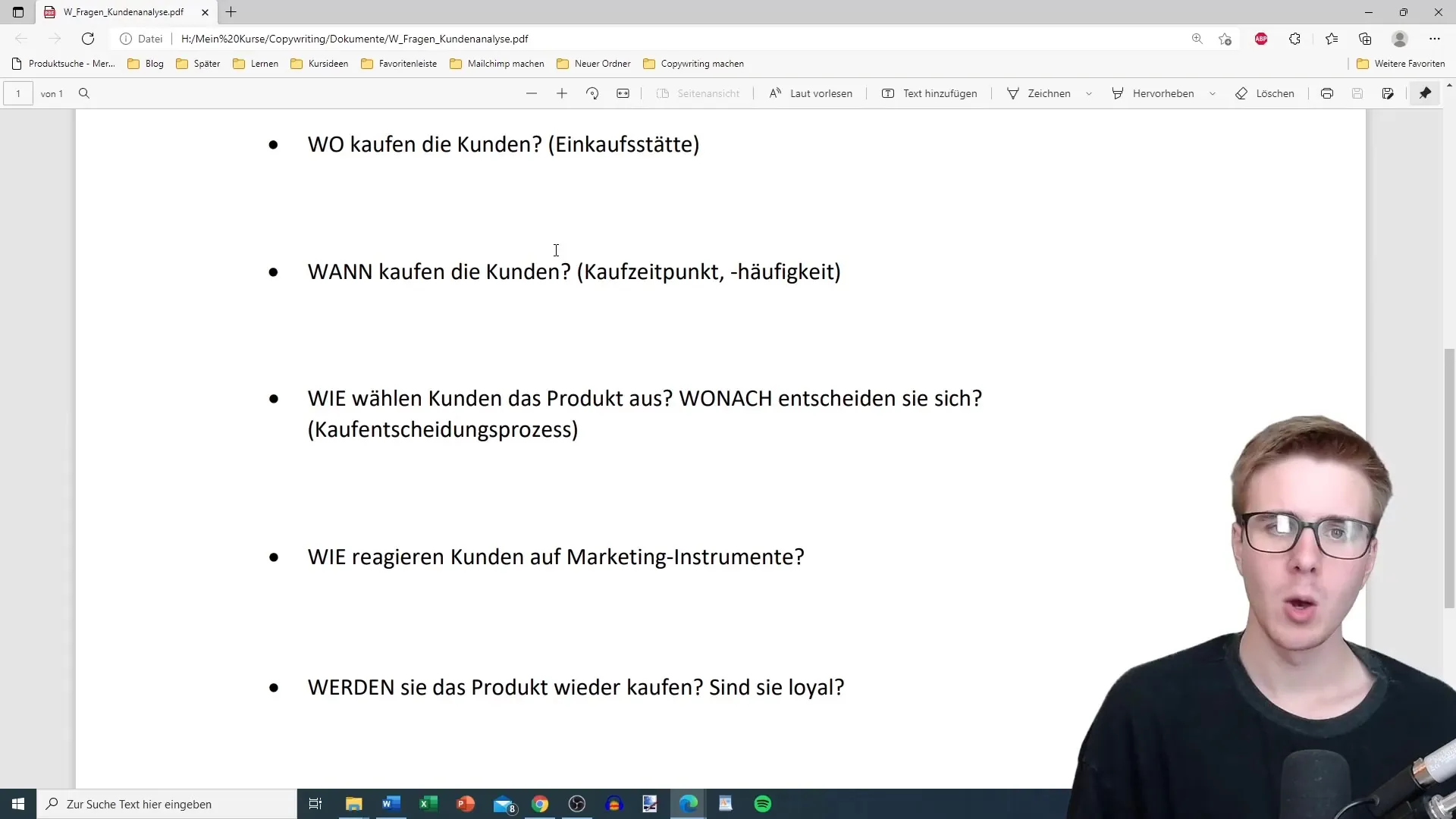
5. When do customers buy?
The timing and frequency of purchases are also crucial. When do customers enter the buying process?
Are they regular purchases like groceries, or do they buy less frequently such as electronics? Identifying these patterns can help you time your advertising and offers more effectively.
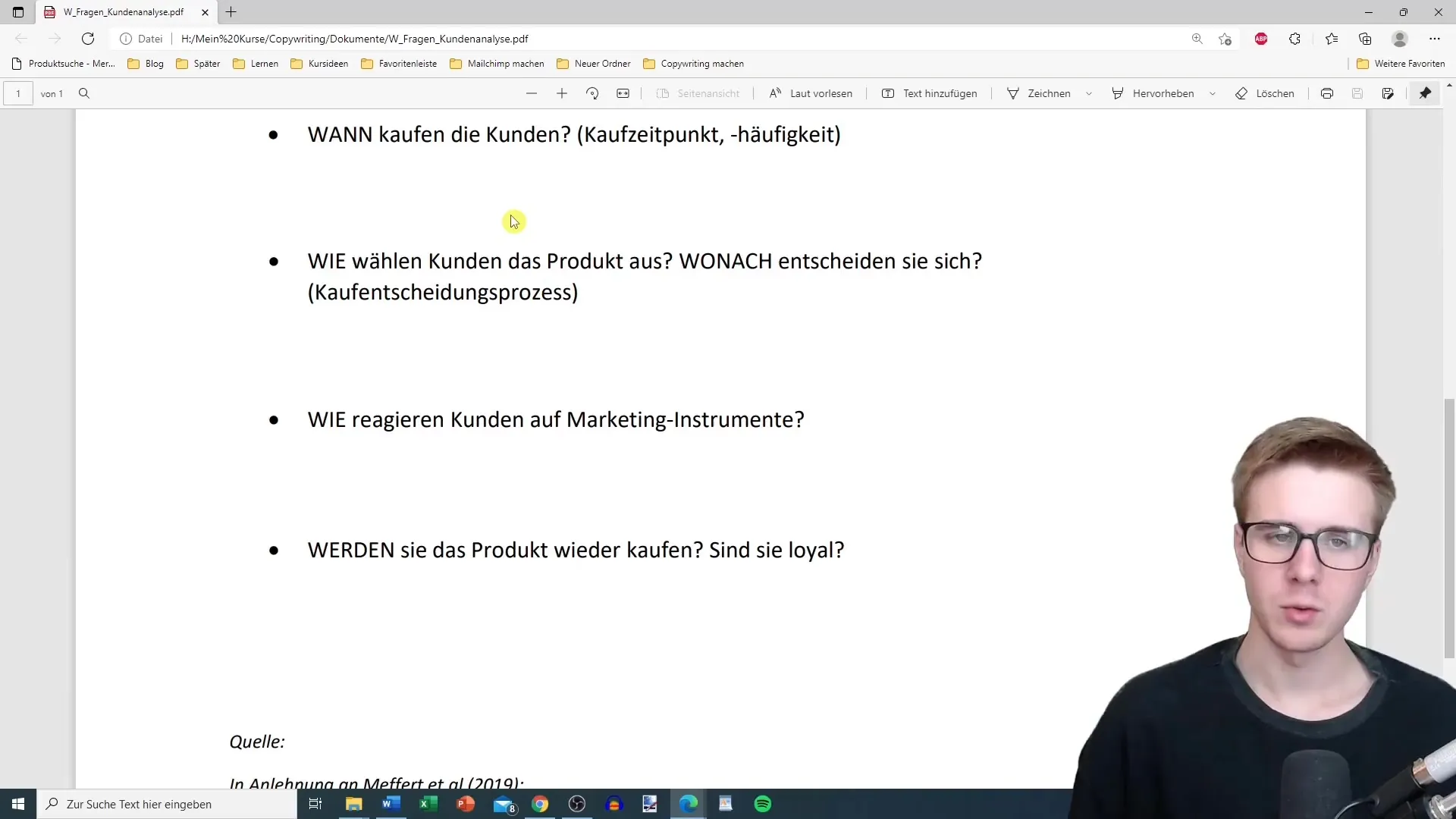
6. How do customers choose the product?
The decision criteria of your customers are crucial. Do they focus mainly on price or on other factors such as quality or features?
It is helpful to consider which demographic and psychographic characteristics are associated with your customer base. Clear answers to this question will help you optimize your sales approach.
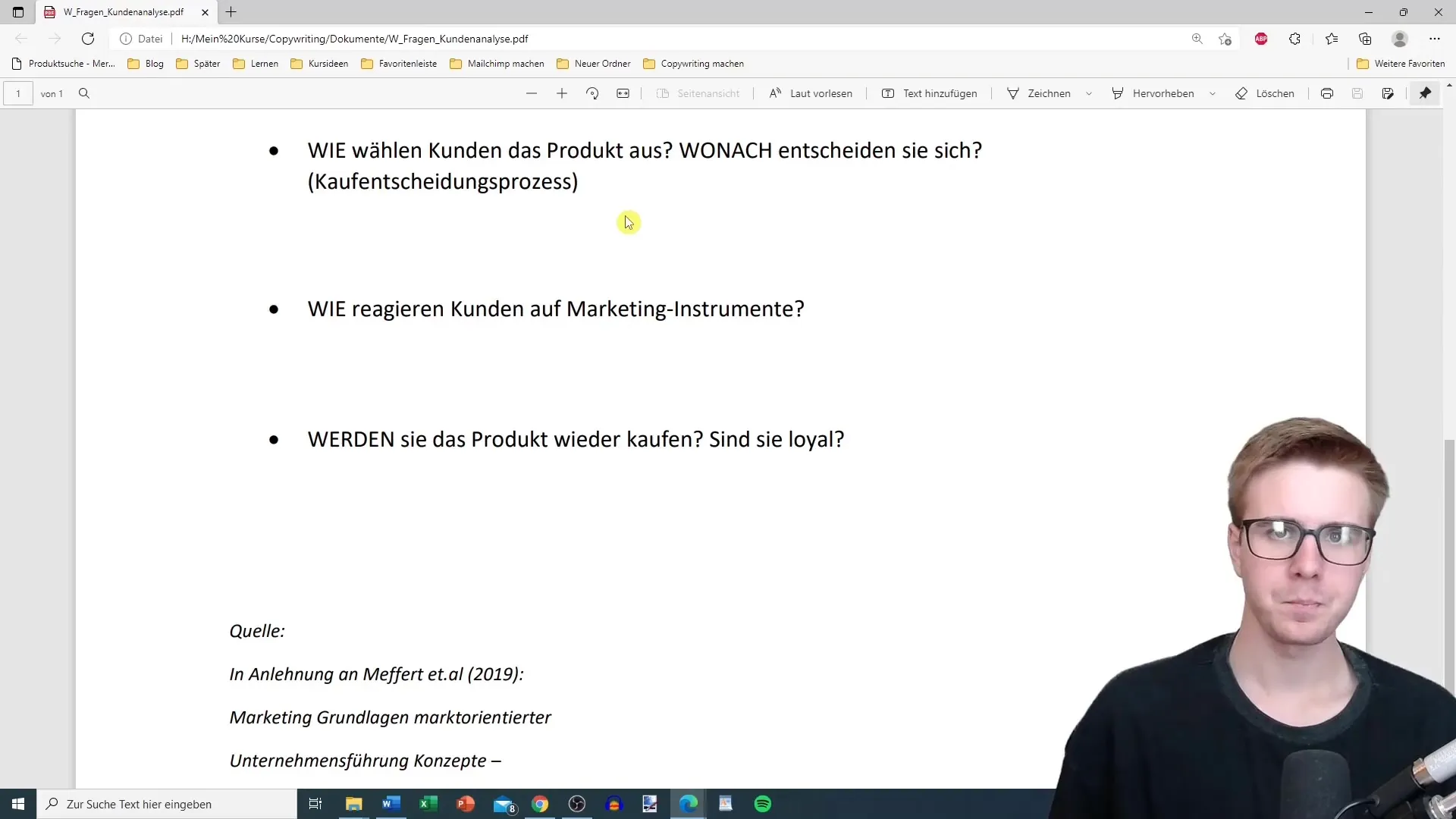
7. How do customers react to marketing tools?
To evaluate the effectiveness of your marketing strategies, you must understand how customers react to different marketing tools.
Interest in newsletters, coupons, or special promotions can be crucial indicators of how you should steer your self-presentation.
8. Will customers repurchase the product?
Loyalty is a crucial factor in customer behavior. Determine whether customers will remain loyal and buy from you again in the future.
Here, it is useful to analyze the reasons for brand loyalty. Customers who were already satisfied often tend to remain loyal to their chosen brand provider.
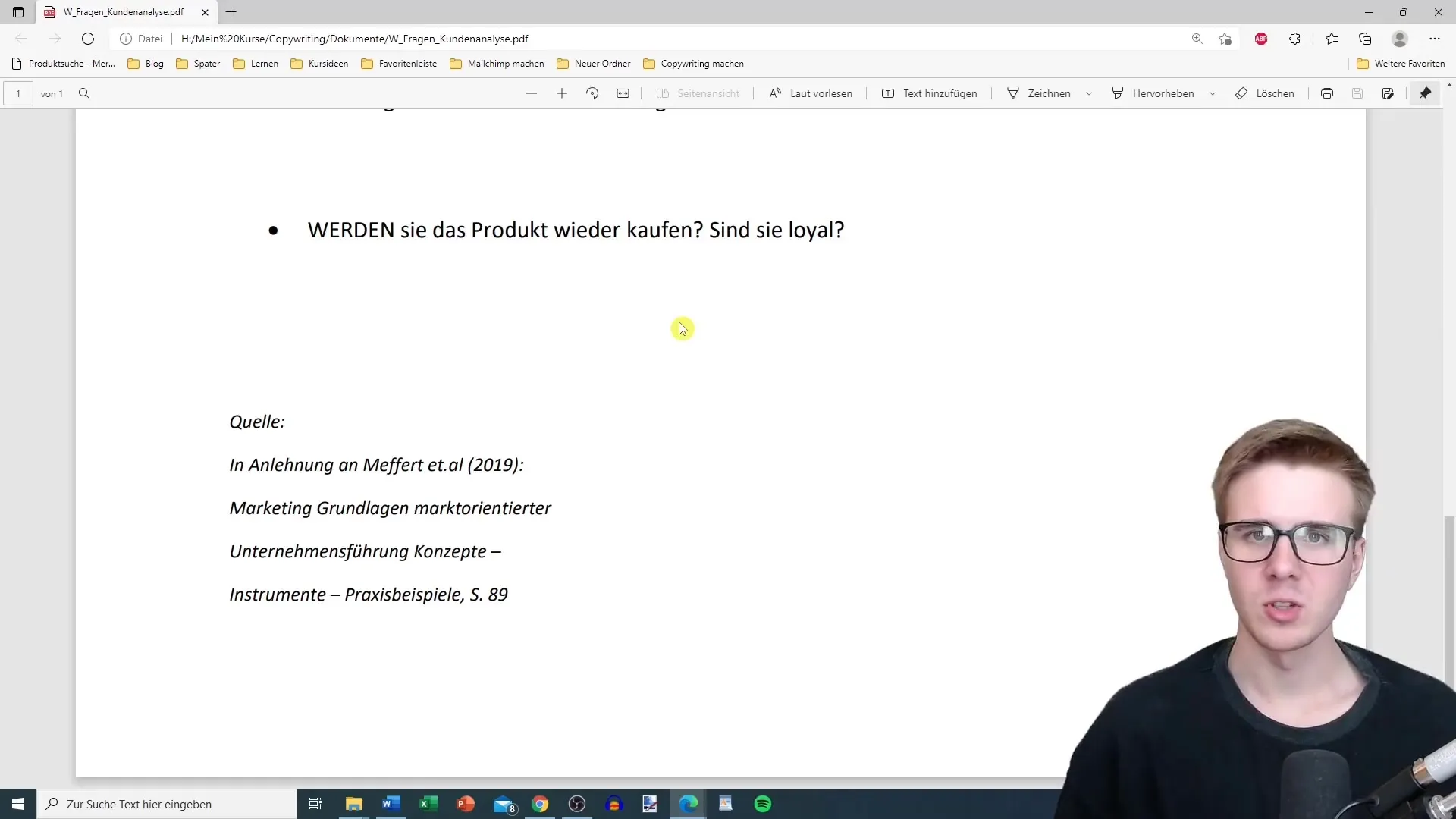
In this document, you have the opportunity to fill out all the W-questions and think about your target audience. Especially when writing your sales documents, this knowledge is invaluable.
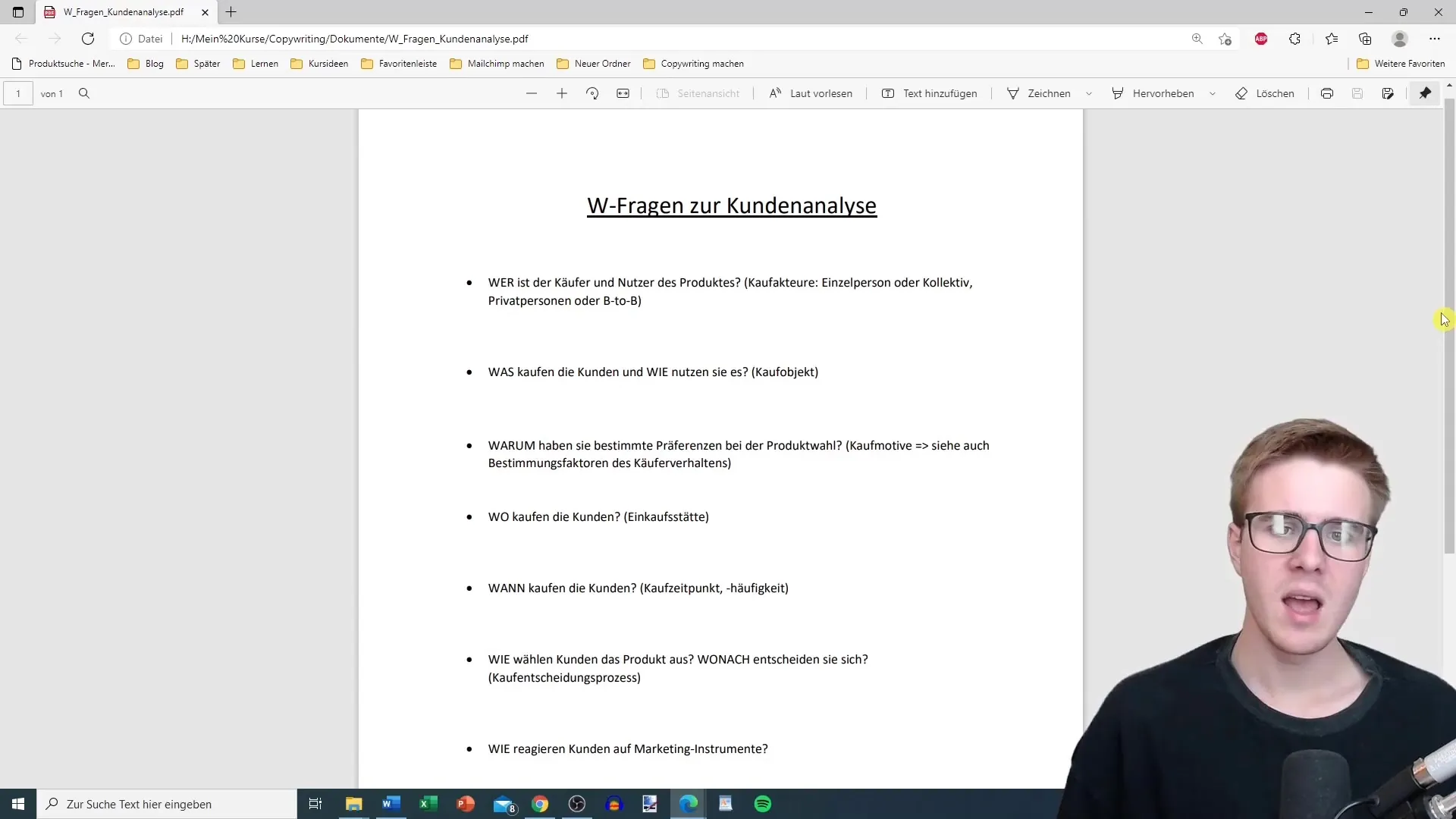
Summary
The W-questions provide you with a valuable structure to better understand your target audience. This knowledge enables you to develop specific and effective marketing strategies. Use the insights to adjust your texts and advertising measures, which can ultimately lead to higher conversion rates.
Frequently Asked Questions
How can I adapt the W-questions?The W-questions should reflect the specific needs and characteristics of your target audience.
Why are the W-questions important for Copywriting?They help develop a deeper understanding of the customer, leading to more targeted marketing strategies.
How often should I update my W-questions?It is advisable to regularly review and adjust the W-questions, especially in case of market or target audience changes.
